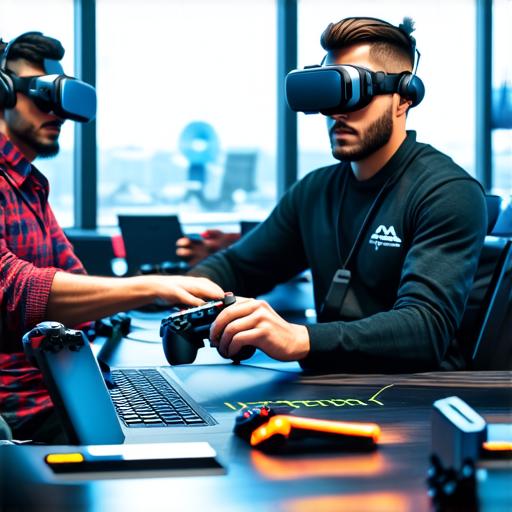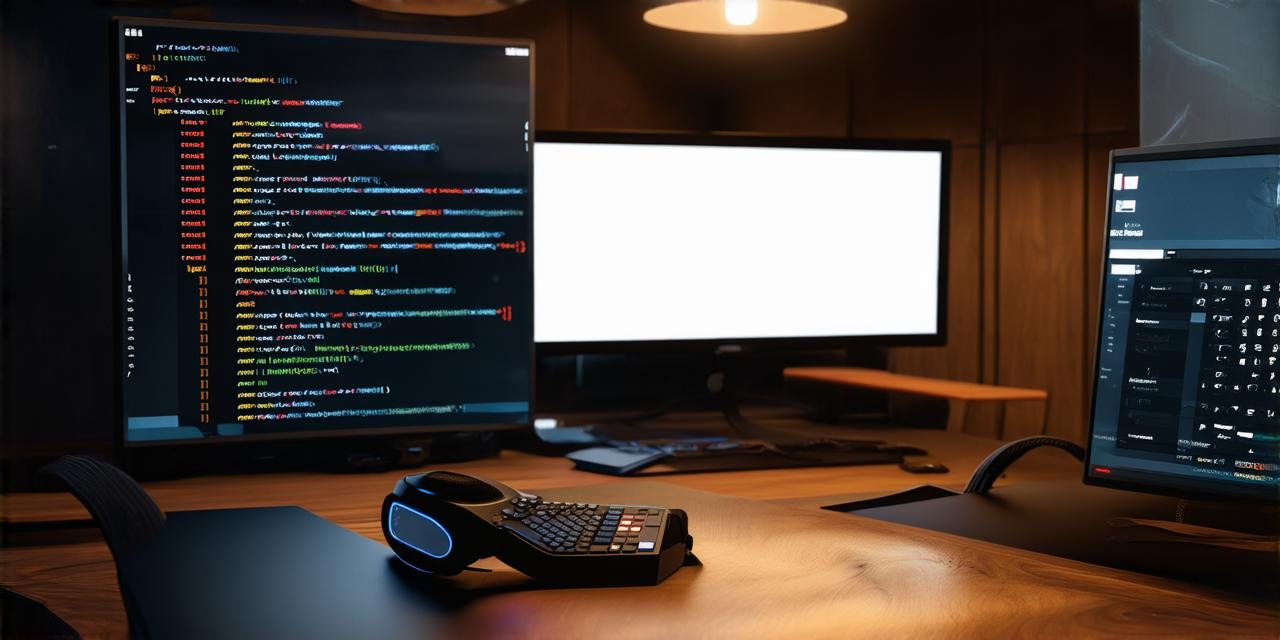
Unity
Unity is one of the most popular game engines for VR development. It is a cross-platform engine that allows developers to create games for multiple platforms, including PC, mobile, and VR. Unity supports a wide range of VR devices, including Oculus Rift, HTC Vive, and PlayStation VR.
One of the key features of Unity is its support for real-time graphics rendering. This allows developers to create games that look and feel like they are running in real-time, even on low-end hardware. Additionally, Unity has a large community of developers and a vast library of assets that can be used to speed up the development process.
Unreal Engine
Unreal Engine is another popular game engine for VR development. It is known for its high-quality graphics and advanced physics simulation capabilities. Unreal Engine supports multiple VR platforms, including Oculus Rift, HTC Vive, and PlayStation VR.
One of the key advantages of Unreal Engine is its support for real-time ray tracing. This allows developers to create games with incredibly realistic lighting effects that can significantly enhance the immersion factor of the game. Additionally, Unreal Engine has a large library of assets that can be used to speed up the development process.
A-Frame
A-Frame is an open-source web framework for creating VR experiences. It is designed to be easy to use and requires no coding experience to get started. A-Frame allows developers to create VR experiences using HTML, CSS, and JavaScript.
One of the key advantages of A-Frame is its support for web browsers. This means that users can access VR experiences created with A-Frame directly from their web browser without needing a separate VR headset. Additionally, A-Frame has a large library of components that can be used to speed up the development process.
Blender
Blender is a powerful 3D modeling and animation software that can be used for VR game development. It is free and open-source, making it accessible to developers of all skill levels. Blender supports multiple VR platforms, including Oculus Rift, HTC Vive, and PlayStation VR.
One of the key advantages of Blender is its support for real-time rendering. This allows developers to create games that look and feel like they are running in real-time, even on low-end hardware. Additionally, Blender has a large community of users and a vast library of plugins and add-ons that can be used to speed up the development process.
Case Studies
One example of a successful VR game developed using Unity is “Beat Saber.” It was created by Beat Games and has become one of the most popular VR games on the market. Another example is “Job Simulator,” which was created by Oculus VR and won multiple awards for its innovative use of VR technology.
One example of a successful VR experience developed using A-Frame is “Tilt Brush.” It was created by Google and allows users to create 3D models in a virtual space using a VR headset and motion controllers. Another example is “Alice: Mad Hatter Mansion,” which was created by the VR Society of Japan and won multiple awards for its immersive and engaging gameplay.
FAQs
What are some of the most popular VR platforms?
The most popular VR platforms are Oculus Rift, HTC Vive, and PlayStation VR.
What tools do I need to develop a VR game?
Some of the most popular tools for developing VR games include Unity, Unreal Engine, A-Frame, and Blender.
Can I create VR experiences using web browsers?
Yes, A-Frame is an open-source web framework that allows developers to create VR experiences using HTML, CSS, and JavaScript.
Do I need coding experience to develop a VR game?
No, A-Frame is designed to be easy to use and requires no coding experience to get started. However, for more advanced VR development, coding skills may be necessary.
Conclusion
Virtual reality game development is a rapidly growing field that offers developers unique opportunities to create immersive and engaging games. The tools listed in this article are some of the best available for VR game development in 2021.
